Extractive industries policy and administration
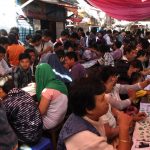
Myanmar is richly endowed with natural resources and is the world’s largest producer and exporter of jade. Myanmar extracts and processes its resources into a variety of forms and products, in addition to the primary export of jade, natural gas, and petroleum, coal, copper, gemstones, ...
Coal

Although exploratory work has indicated the presence of modest coal resources in northern Cambodia, no commercial-scale mining has yet begun. The coal used in electricity generation and for other purposes is imported.A coal barge from Samarinda coal mine on the Mahakam river. Indonesia, Borneo. Photo ...
On-shore oil and gas exploration and extraction

Nineteen onshore blocks have been delineated for possible oil exploration. Contracts have been awarded for three. No oil is currently extracted in Cambodia. ...
Mitigation

Together, fighting climate change. Photo by 350.org, taken on 12 October 2010. Licensed under CC BY-NC-SA 2.0.Clean Development MechanismThe Clean Development Mechanism (CDM), defined in Article 12 of the Kyoto Protocol, allows a country with an emission-reduction or emission-limitation commitment under the Kyoto Protocol to ...
Extractive industries
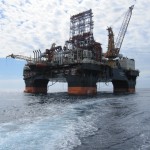
The industrial processes for extracting minerals include drilling and pumping, quarrying, and mining. Extractive industries are generally divided into two sectors: mining, and oil and gas. In addition to natural gas, oil and coal reserves, the Lower Mekong's mineral resources include gold, copper, jade, lead, ...
Oil and gas resources

Oil and gas have been found on Cambodian territory but no commercial extraction has begun. When extraction may begin is uncertain while oil prices are at comparatively low levels. All the petroleum products for local demand are imported, chiefly from Vietnam, Singapore and Thailand. Consumption ...
Adaptation

UN’s Bali Climate Change Conference. Photo by Oxfam International, taken on 4 December 2007. Licensed under CC BY-NC-ND 2.0Climate change is a continuing problem. In Southeast Asia, Cambodia is one of the countries that is most affected and underprepared. As it is a developing country, ...
Hydropower dams

In 2003, a national sector review for hydropower was prepared by the Ministry for Industry, Mines and Energy (now Ministry of Mines and Energy) and the Cambodian National Mekong Committee (CNMC). This report identified 60 possible sites for hydropower development in Cambodia and estimated the ...
Solid waste

A landfill site in Battambang province, Cambodia. Photo by freshheadfilms, taken on 6 January 2005. Licensed under CC BY-ND 2.0In Cambodia, burning waste remains a common practice, particularly in rural areas, due to the lack of dumpsites or waste collection services. It is still considered ...
Minerals and mineral products

Minerals from Halpern Mineral Collection, San Francisco, Photo by Eric Hunt taken on October 21 2006. License under: CC BY-NC-ND 2.0Many of Cambodia’s mineral resources are undeveloped, with most production concentrating on construction materials such as crushed stone, sand, gravel and limestone.180There is currently no ...
SDG 6 Clean water and sanitation
SDG 6 – “Ensure availability and sustainable management of water and sanitation for all” – has a monitoring framework with eight targets and 11 indicators. These will be used to drive action towards achieving universal access to safely and appropriately managed water resources as part ...
SDG 9 Industry, innovation and infrastructure
SDG 9 – “Build resilient infrastructure, promote inclusive and sustainable industrialization and foster innovation” – is made up of eight targets and 12 indicators. SDG 9 addresses three aspects of sustainable development: infrastructure (9.1, 9.4, 9.A), inclusive industrial development (9.2) including a focus on small-scale ...
Nationally Appropriate Mitigation Action
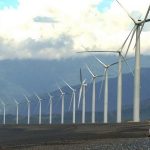
National Appropriate Mitigation Actions (NAMA) are voluntary, country-specific commitments to action that reduce emissions compared to ‘business as usual’ volumes.271 Recognizing that “economic and social development and poverty eradication are the first and overriding priorities of the developing country Parties,” the focus on NAMAs is ...
Mitigation
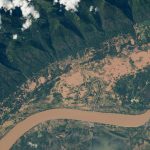
What is mitigation? The impacts of climate change are undeniable. Mitigation and adaptation actions must be taken to address these consequences. So, clarifying what mitigation and adaptation actually means is necessary. Flooding on the Mekong River floodplain, Thailand and Laos. Photo by NASA Johnson, Flickr. Uploaded ...
Infrastructure
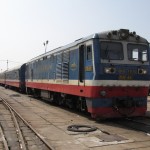
Adding to and upgrading the Mekong region's infrastructure has been given a high priority by governments, development partners and regional banks. The shortfall in the estimated amount that needs to be spent by 2020 is being addressed by several new initiatives and strategies in the ...
Mining

The mining sector in Cambodia is mostly undeveloped, and active mining enterprises are typically small-scale quarries producing materials for construction, such as laterite, marble, granite, limestone, gravel and sand. There is no industrial-scale extraction of minerals, although many exploration licenses have been granted to ...
Environment and natural resources

Around three quarters of Cambodia’s population depend on agriculture, forest products and fisheries for their livelihoods, so the management of the environment and natural resources is of great importance. Deforestation has occurred on a large scale. Cambodia lost six percent of its remaining primary forest ...
Infrastructure
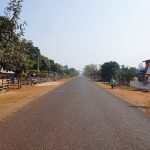
Inadequate infrastructure is often referred to as a major constraint on the socio-economic development of Laos. Thus, it has been a major goal of the Lao government to upgrade infrastructure in line with meeting the UN Sustainable Development Goals (SDGs), particularly SDG 9. This goal is associated with developing built ...
Extractive industries policy and administration

Cambodia’s extractive industries have traditionally operated on a small scale, mostly mining construction materials, gold or gemstones. While commercial production of minerals or oil has yet to begin on a large scale – these products made up just 0.1% of the country’s exports in 2016369 – ...






